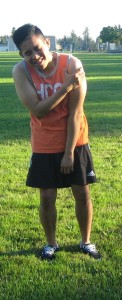Strained rotator cuff muscles might also include the tendons responsible for connecting them to the shoulder bones. This condition is called tendinitis which occur when the muscle or tendon overexerts itself and stretches too far, resulting to the separation of the tissue fibers. Even though painful, most cases of shoulder injuries are usually minor and can be managed at home. As for severe cases of strains that involve tearing of the muscle tissues or those that occur along with the musculoskeletal injury to the shoulders, it would require medical care or even surgery.
Pain medications
The pain and inflammation caused by a strained rotator cuff muscle can both be managed by using non-steroidal anti-inflammatory drugs (NSAIDs). It is recommended to take NSAIDs such as ibuprofen and aspirin as well as acetaminophen as directed.
It is vital to stick with a regular dosage schedule in order to provide maximum relief. For severe pain conditions, it would require the administration of cortisone shot in order to put an end to the pain cycle.
Immobilization
It is important to note that immobilization is the initial first aid treatment that helps relieve stress from the affected muscles. The pain from a strained rotator cuff muscle might prevent the individual from resting properly, especially during the initial days of inflammation.
In most cases, it is recommended to avoid engaging in any strenuous activity after muscle or tendon injury which includes sore overhead movements. An elastic shoulder wrap or sling can help immobilize the rotator cuff while the level of pain is high.

Cold pack therapy
The application of a cold compress over the strained rotator cuff muscles provides immediate relief from pain as well as minimizes the swelling, particularly during the acute stage after the injury. Managing the inflammation is vital for fast recovery which is why it is recommended to apply a cold compress several times a day.
The strained muscle can greatly benefit from the applications for 20 minutes at a time using an ice-cold reusable gel pack. Once the swelling subsides, a warm compress or hot pack can be alternated with the cold compress for effective pain relief.
Range of motion therapy
Even though immobilization is suitable for a short period, the rotator cuff muscles will not mend and become stronger unless they are used. Once the pain subsides, it is recommended to exercise the range of motion of the individual.
The individual should stay within the pain limits by holding each stretch for 10 seconds and repeat at least 6 times. Gentle shoulder rolls which involve simultaneous rolling in a circular motion can deal with the range of motion issue.
Physical therapy
It is important to note that physical therapy serves as a rehabilitative treatment while the strained rotator cuff muscles are healing. A physical therapist can assess the shoulder strain and isolate the muscles and tendons that require strengthening. The therapy involves customized exercise plans to help hasten the recovery.
